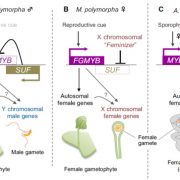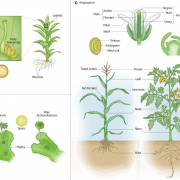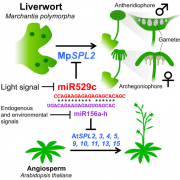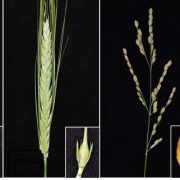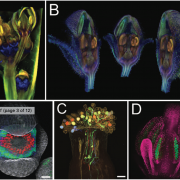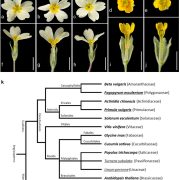Review: Development and evolution of the Asteraceae inflorescence
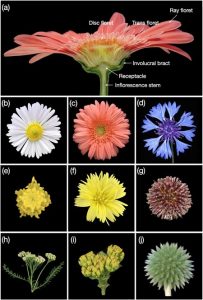 Asteraceae, also known as Compositae or the daisy family, is one of the largest plant families and comprises 10% of all flowering plants. Members of this family are found in habitats worldwide. The unique inflorescence, called a capitulum, is a key innovation of the family and contributes to its success. This highly compressed head-like structure can consist of a single flower but usually is composed of multiple florets. In this new review, Zhang and Elomaa delve into the development and evolution of the capitulum, shedding light on molecular and genetic studies that have expanded our understanding of its formation such as exploring the patterning and maturation of florets within the capitulum, including the iconic phyllotactic arrangement of florets in Fibonacci numbers of spirals. While much has been uncovered about the capitulum’s evolution and organization, there is still a large numberr of species to explore. The paper emphasizes Asteraceae’s potential as a model for evolutionary developmental studies, utilizing its diverse morphology and genetic networks to advance crop breeding efforts. (Summary by Villő Bernád) New Phytol. 10.1111/nph.19590
Asteraceae, also known as Compositae or the daisy family, is one of the largest plant families and comprises 10% of all flowering plants. Members of this family are found in habitats worldwide. The unique inflorescence, called a capitulum, is a key innovation of the family and contributes to its success. This highly compressed head-like structure can consist of a single flower but usually is composed of multiple florets. In this new review, Zhang and Elomaa delve into the development and evolution of the capitulum, shedding light on molecular and genetic studies that have expanded our understanding of its formation such as exploring the patterning and maturation of florets within the capitulum, including the iconic phyllotactic arrangement of florets in Fibonacci numbers of spirals. While much has been uncovered about the capitulum’s evolution and organization, there is still a large numberr of species to explore. The paper emphasizes Asteraceae’s potential as a model for evolutionary developmental studies, utilizing its diverse morphology and genetic networks to advance crop breeding efforts. (Summary by Villő Bernád) New Phytol. 10.1111/nph.19590


